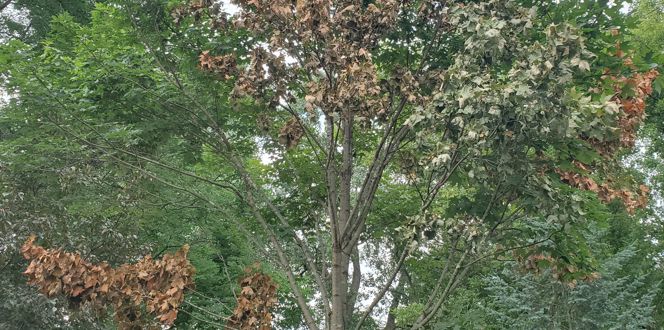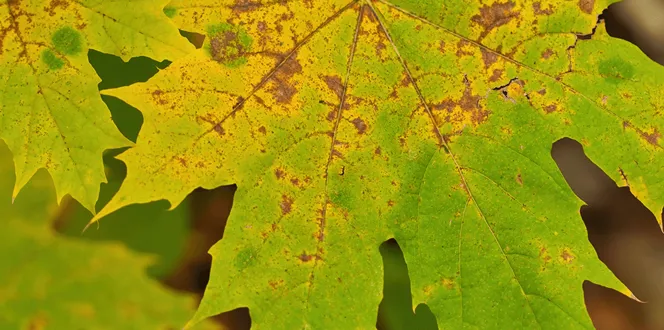You know you’re supposed to water your tree, but is your tree supposed to water your lawn in return?!
If you’ve seen your tree trunk dripping water like a leaky pipe, that’s not your tree being helpful. It’s actually letting you know it needs some help!
Unlike pipe problems, we can't patch up our trees with a handy plumbing kit. What we can do is make sure our trees are healthy enough to survive a wetwood infection. Here's how.
Why is water leaking, falling, oozing or gushing from my tree trunk? (Slime flux)
You can thank bacterial wetwood, also known as slime flux. It's a disease that works its way into tree wood and spills out in the form of thin, water-like liquid.
Why is this happening?
Wetwood-causing bacteria enter trees through wounds in the roots, trunk or limbs.
Once inside, the bacteria produce gas within the tree. Pressure mounts, and eventually runny liquid seeps out through openings in the bark. The liquid starts out thin and transparent, then becomes a slimy, smelly ooze. As it drips down, it stains the tree's trunk a yellow or dark brown.
Are maple trees more likely to leak clear liquid?
Yes, bacterial wetwood is most common in maple, elm, oak, poplar and birch trees. But, since so many different bacteria can spark wetwood, it can also happen to lots of other trees.
Is bacterial wetwood harmful?
Damage done by bacterial wetwood depends on the condition of your tree. For most trees, the stained bark is as bad as it gets. In fact, the bacterial infection may actually inhibit fungal decay development.
But stressed trees, particularly those suffering from soil compaction or drought stress, can get worse because of bacterial wetwood. It's not very common, but some trees’ leaves yellow and wilt. Others may suffer from branch dieback.
Can I stop bacterial wetwood or slime flux?
Sadly, no. Once a tree is infected, there's no way to cure the disease.
But, your tree can still survive for years to come, even with its oozing trunk. The best way to manage bacterial wetwood is to keep your tree stress-free with these steps:
- Don’t strike the tree when mowing the lawn. You don't want to risk weakening your tree while it’s dealing with a disease. That just adds more stress.
- Don't remove healthy bark just because it's stained.
- Give your tree adequate water during a drought.
- Check if your tree has compacted soil, which is another serious stressor. If it does, fix it.





